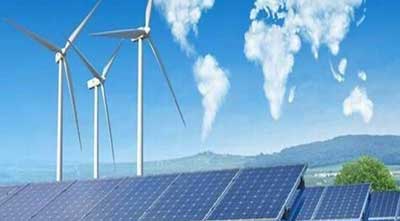Date: 01/02/2023
Relevance: GS-3: Science and Technology- developments and their applications and effects in everyday life.
Key Phrases: Renewable Energy, Decarbonisation, Paris Agreement, Energy Transition, Budget, Net-Zero, Investment, Planning, Borrowing, Fiscal Target.
Context:
- Since India's commitment to global decarbonisation under the Paris Agreement in 2015 and its pledge to reach net-zero by 2070 at the Glasgow summit in 2021, the key components of India's multi-decade energy transition have become clearer.
- Roadmap for energy transition must be defined in the Budget and Finance panel. States also have a key role to play in this process.
Key Highlights:
- The broad elements of India’s Decarbonisation strategy are now
clear which are as follows:-
- Increasing electrification.
- Higher penetration of cleaner fuels in the energy mix.
- Accelerated adoption of energy efficient technologies.
- Rising digitalisation.
- Improved material efficiency, including determined moves toward a circular economy.
- India today stands at number four in the world in installed renewable capacity (after China, US, and Germany).
States’ Disparities:
- The energy transition is only one of the many challenges that India needs to address in its journey to becoming a developed nation by 2047, and there is significant disparity across States that needs to be addressed as well.
- The challenges will require investment resources, mostly in the public sector although some will also be needed by the private sector.
- The paper titled ‘Debt, Creditworthiness and Climate’, notes that
many developing countries have accumulated public debt as an appropriate
response to the pandemic.
- Typically, restoring fiscal discipline is needed to improve credit scores, which is the expected outcome under the Fiscal Responsibility and Budget Management law for both the central and state governments.
- The paper argues that the severity of the climate change crisis and the human capital deficit caused by the pandemic require a significant increase in investment, potentially up to 4% of GDP above current levels, sustained for decades.
- This investment has the potential to drive medium-term growth.
Emerging markets’ dilemma:
- The dilemma facing emerging markets is deciding whether to prioritize preserving economic stability by retrenching or to invest for the 21st century's economic realities, even if it means increasing debt, to maintain creditworthiness.
- The solution to this dilemma depends on the country's initial
conditions and the terms of available financing.
- The international official sector, especially the multilateral development banks, must significantly increase lending to reduce the cost of external finance and make this investment push feasible.
- In light of this, India's medium-term financing challenges must be
considered in both the short-term (represented by the upcoming Union Budget)
and the long-term (as typically evaluated by finance commissions).
- The reports argument provides a starting point for both examination and action, suggesting that creditworthiness can be preserved at a high investment, high growth state with reasonable financing terms, instead of a slower path of fiscal consolidation.
Do you Know?
- Initiatives & Achievements of MNRE
- Solar Capacity Increased In The Last 7.5 Years From Around 2.6 Gw To More Than 46 Gw.
- World's Largest Renewable Energy Expansion Programme 175 Gw Till 2022.
- Renewable Energy Has A Share Of 26.53% In The Total Installed Generation Capacity In The Country.
- India Now at 4th Global Position for Overall Installed Renewable Energy Capacity.
- Solar Power Tariff Reduced By More Than 75% Using Plug And Play Model.
- About 19 times higher solar pumps installed between 2014-19 | 2.25 lakh versus upto 2014 - 11,626.
- Renewable Energy Installed Capacity Increased 286% in Last 7.5 Years.
- Solar Park Scheme Doubled From 20gw To 40gw.
- Record Low Solar Tariff Rs 1.99/Unit Achieved.
- Highest Ever Wind Capacity Addition Of 5.5 Gw In 2016-2017.
Way Forward:
- The above argument is tenable under three rather demanding conditions.
- First, the policy regime at both the Centre and the States must assure high quality investment.
- Second, the financial markets buy into this story so that India’s private sector is not penalised by deterioration in India’s credit rating.
- Third, that the effective fiscal cost of multilateral borrowing is not materially affected by its foreign currency denomination.
Conclusion:
- Over the last eight years NITI Aayog has evolved a diverse tool kit to implement indicative planning both at the Union Government level, and in India’s States and UTs.
- In terms of an agenda for action, NITI Aayog could work more closely with States to come up with an assessment of the quality of public investment.
- India’s G20 Presidency could work in the finance track to explore the realism of a major expansion in the lending capacity of the multilateral development banks, starting with the World Bank Group.
Source: Business Line.
Mains Question:
Q. The energy transition is only one of the many challenges that India needs to address in its journey to becoming a developed nation by 2047, and there is significant disparity across States that needs to be addressed as well. Comment (150 words)






















